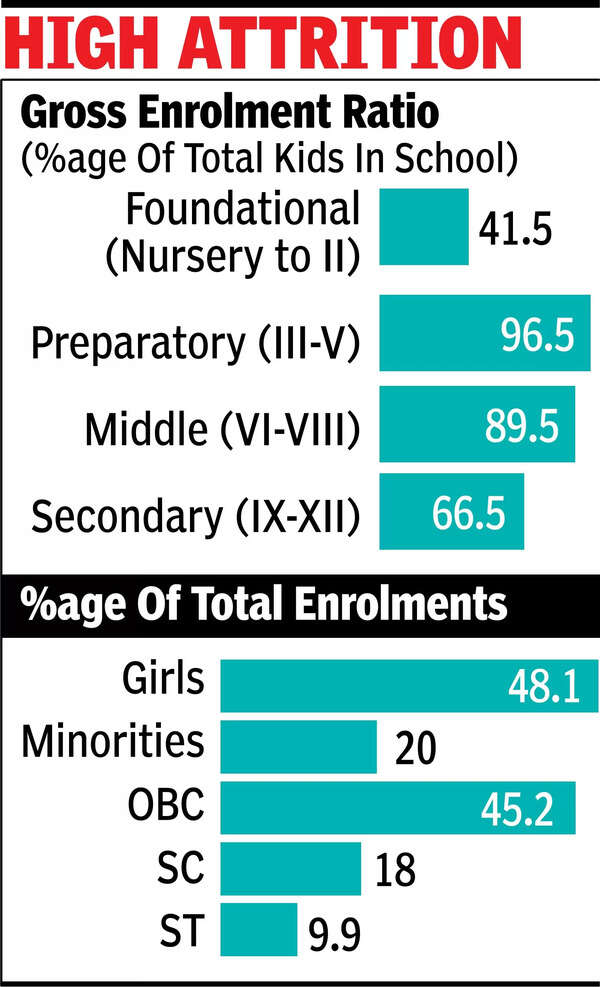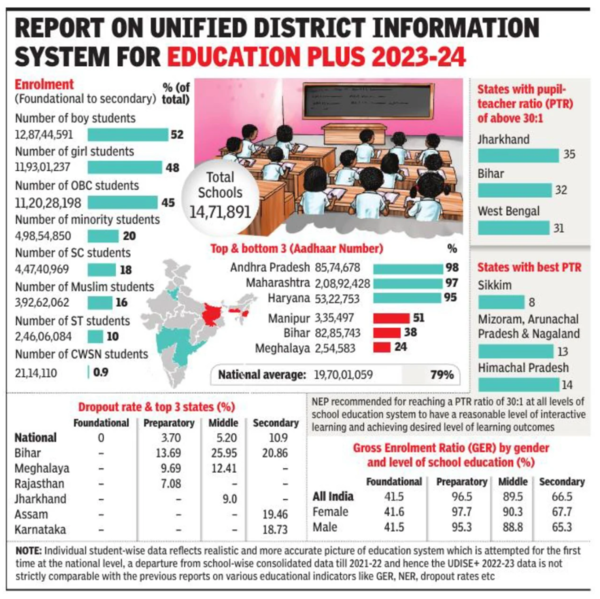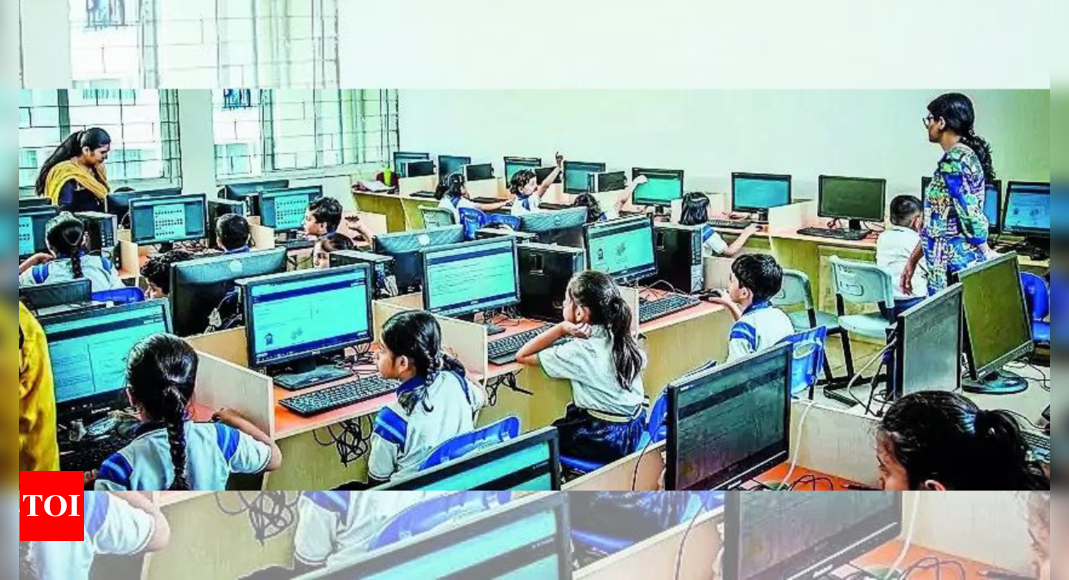India’s school infrastructure presents a mixed picture of progress and persistent challenges, as highlighted in the Unified District Information System for Education Plus (UDISE+) 2023-24 report. While more than 90% of schools have basic amenities such as electricity and gender-specific toilets, advanced facilities such as functional desks, internet access and ramps with handrails remain limited.
Only 57.2% of schools have functional computers, 53.9% have Internet, and 52.3% are equipped with ramps, underscoring significant gaps in accessibility and technology readiness.
The enrollment landscape has seen changes, with the total number of students reduced by 37 lakh to 24.8 crore in 2023-24. Boys represent 51.9% of enrollment and girls 48.1%. The shift from aggregated school-level data to individual student records, facilitated by unique educational IDs linked to Aadhaar, is a step forward. “Data on students gives a more accurate picture of the education system,” said a ministry official, adding that the new methodology may partly explain the observed variations.

Dropout rates increase from 5.2% in secondary to 10.9% in secondary: study
This approach marks a departure from previous school-level aggregate data, improving progression tracking and retention. The introduction of unique educational IDs alongside Aadhaar aims to streamline the identification of beneficiaries for government schemes, reducing duplication and promoting equitable distribution of resources.
The gross enrollment ratio (GER) reveals disparities between educational levels. While the preparatory level has a gross rate of 96.5%, the basic level is only 41.5%. The middle and secondary levels are at 89.5% and 66.5%, respectively. Dropout rates also increase markedly at higher education levels, from 5.2% in middle school to 10.9% in high school. Retention rates reflect a similar trend, falling from 85.4% at the preparatory level to just 45.6% at the secondary stage.
Disparities between states further complicate the picture. West Bengal has 79% foundation and preparatory schools, but only 11.6% secondary schools, creating a risk of higher dropout rates. In contrast, 75.6% of secondary schools in Chandigarh indicate a focus on higher education but highlight a dearth of core institutions (6.1%). Infrastructure gaps and teacher deployment issues exacerbate these challenges. “Despite the efforts made under NE, infrastructure gaps hamper our progress towards universal education. Optimizing resources is key to meeting the ambitious 2030 targets,” the ministry official added.

Teacher distribution and student-teacher ratio (PTR) remain critical issues. Several states, including Jharkhand, Bihar and West Bengal, exceed the NEP-recommended PTR ratio of 30:1 at the secondary level. On the contrary, Delhi and Chandigarh have optimal PTRs aligned with NEP norms. However, states like Assam, Odisha and Karnataka face underutilized infrastructure due to low student-to-school ratio.
NE prioritizes inclusion and equity, and UDISE+ data offers a snapshot of representation. Girls constitute 48.1% of total enrollment and minorities represent 20%; Muslim students represent 79.6% of this group. The social category data shows that 45.2% of the students belong to the OBC category, followed by 18% SC and 9.9% ST. Aadhaar seeding is 79.4% nationally, but states like Meghalaya (24.1%), Bihar (38.8%) and Manipur (51.8%) are lagging, which could affect targeted interventions .
“Universal access to education and reducing dropout rates by 2030 is a main objective of the EN and the Sustainable Development Goals (SDGs),” the report states. Aadhaar-linked educational IDs improve dropout tracking and re-enrollment efforts, while streamlining the governance of programs like Samagra Shiksha and PM POSHAN.
Despite progress in basic enrollment, transition rates between educational stages remain uneven. While 98.1% of students progress from basic to high school, only 83.3% move from middle to high school. These statistics underscore the systemic challenges in retaining students and ensuring smooth educational progression. The UDISE+ report serves as a call to action to optimize infrastructure, improve teacher deployment, and address disparities in enrollment and retention. These measures are essential to realizing the NEP vision of equitable and inclusive education by 2030.
Don’t miss the annual horoscope 2025 and the Chinese horoscope 2025 for the zodiac signs Rat, Ox, Tiger, Rabbit, Dragon, Snake, Horse, Goat, Monkey, Rooster, Dog and Pig. Spread love this holiday season with these Happy New Year wishes, messages and quotes.





